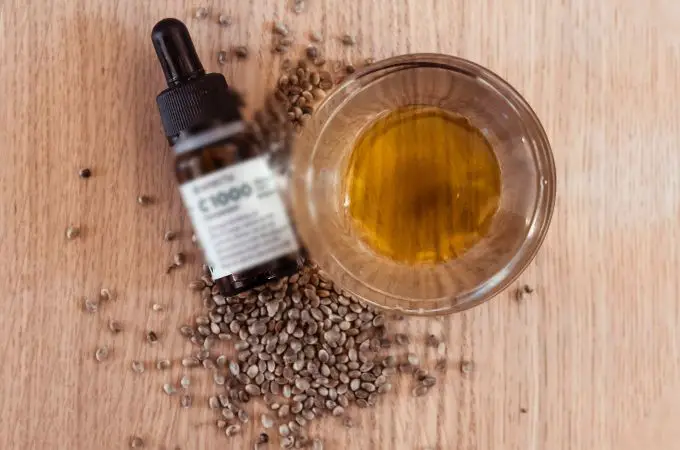Mamas, we see you.
As your predicted due date nears, the exhaustion is real. Your swollen ankles and sore back might be making your days feel extra long.
Or…
You may be happy for baby to stay put, but it’s beyond your due date and perhaps you’re concerned about a medical induction.
Whatever the reason, natural induction of labor is hardly a new concept, as mothers, doctors and apothecaries throughout the ages can attest. But while there are several methods that some moms swear by, what does the evidence say?
Let’s take a look at the scientific literature — or lack thereof — behind the most common natural induction methods: What are they intended to do? Are there any possible risks associated with trying them? And, of course, what is their efficacy?
Disclaimer
Okay, parents, this is a big one, and it’s important, so please read.
First: We cannot personally offer an active recommendation on the use of any of these natural labor induction methods. While many are safe to try in a healthy pregnancy, only your doctor can determine if it’s okay for you to try one or more of these tactics to induce labor. Failure to comply with your doctor’s orders can cause harm to you and your baby, so seeking a medical opinion before trying these methods really isn’t optional.
Second: As much as we wish we could, we can’t guarantee that any of these methods will actually trigger labor for you – and that’s okay. Your little one is safe where they are, and unless your doctor is recommending a medical induction, there’s no need to rush them out into the world. They’re still growing and developing in a space that’s designed to accommodate them, and this is the first of many times your baby will readily let you know that they keep their own timetable.
The Infographic

A closer look at each natural labor induction method

Castor Oil
Traditional Wisdom & The Science
- Castor oil is a thin, pale golden oil which is derived from the seeds of the plant Ricinus communis; it is also called Oleum Palmae Christi
- One of the most common medical uses of castor oil is as an exceptionally powerful laxative – so much so that it’s used in animal testing studies to create conditions in which to test anti-diarrheal medications
- Castor oil as a labor induction method has serious roots in history, with reports of its use dating back to ancient Egypt
- There may be as high as a 58% chance that castor oil will trigger active labor, as multiple studies on its efficacy in labor induction have suggested
- Castor oil is considered to be one of the safer methods of natural labor induction, but it shouldn’t be consumed in early pregnancy, and causes significant nausea in just about everyone who takes it
How is castor oil purported to work?
For the purposes of inducing labor, castor oil is thought to work by promoting prostaglandin receptor release, which may trigger cervical dilation.
How does one self-administer castor oil?
Studies have shown that a 60ml oral dose of castor oil is sufficient when attempting to induce labor. It’s best to attempt this in the morning, as it’s likely to cause both diarrhea and nausea – be sure to increase your fluid intake accordingly.
Castor Oil: Examining the Evidence
There’s actually reason to believe that castor oil is an effective way to induce labor. In a total of three trials in which 223 pregnant women were assessed, as many as 58% of women experienced labor within 24 hours compared to the 4% of laboring women who were not given the dose.
That said, not that many studies have been performed on this topic, so the spectrum of potential side effects and actual degree of efficacy are still inconclusive. It’s possible that castor oil can increase the likelihood that meconium will occur.
At a glance
| Number of Studies: | Several |
| Negative, null or positive results: | Positive |
| Efficacy: | 5 / 5 |
| Risk: | 2 / 5 |
Key studies
- Andrea, L. et al. (2018). Castor oil as a natural alternative to labor induction: A retrospective descriptive study. Women and Birth 31(2), e99-e104
- Azhari, S., Pirdadeh, S., Lotfalizadeh, M., & Shakeri, M. T. (2006) Evaluation of the effect of castor oil on initiating labor in term pregnancy. Saudi Med J, 27(7), 1011-1014.
- Garry, D., Figueroa, R., Guillaume, J., & Cucco, V. (2000). Use of castor oil in pregnancies at term. Altern Ther Health Med, 6(1), 77-79.
- Kelly, A. J., Kavanagh, J., & Thomas, J. (2013). Castor oil, bath and/or enema for cervical priming and induction of labour. Cochrane Database Syst Rev(7), CD003099.

Breast stimulation
Traditional wisdom & The science
- It’s one of the simplest and least invasive natural labor induction methods, as it is non-medical, free and gives mom control over her experience
- Breast stimulation causes oxytocin, a powerful hormone, to be emitted from the pituitary gland; this is thought to encourage the cervix to ripen, leading to uterine contractions
- Medical literature has referenced the stimulating of the breast as a method of natural labor induction or augmentation for over three centuries
- As many as 37% of women may experience cervical ripening as a result of breast stimulation according to one study
- While it may seem harmless, it’s possible to overdo it with this induction method and trigger uterine hyperstimulation – proceed with caution
How is breast stimulation purported to work?
The working theory being the efficacy of breast stimulation is that it triggers the release of oxytocin, one of our reproductive system’s big-league hormones. This can increase cervical ripening, which refers to the degree to which the cervix is prepared to give birth. This is the precursor to uterine contractions, which may also be triggered.
How does one self-administer breast stimulation?
This is one of those situations where your mileage may vary. There’s no right way to administer stimulation, but gentle and firm touch that focuses on the nipple is what’s traditionally recommended.
Breast Stimulation: Examining the evidence
While breast stimulation is indisputably tied to cervical ripening, it’s far from a foolproof way to trigger active labor.
One study posits the rate of labor induction within 72 hours at around 37%, so the odds are middle-of-the-road, but stimulation has also been linked to a reduction in Cesarean section rate; in one study, only 8% of women who used breast massage required c-sections compared to the 20% in the group that did not. Uterine hyperstimulation, which can cause issues with fetal heart rate, can occur with excessive administration, so supervision from a care provider is wise.
At a glance
| Number of Studies: | Many |
| Negative, null or positive results: | Positive |
| Efficacy: | 4 / 5 |
| Risk: | 2 / 5 |
Key studies
- Adewole, I. F., et al. (1993) “Cervical ripening and induction of labour by breast stimulation.” Afr J Med Med Sci 22(4): 81-85.
- Chayen, B., et al. (1986) “Induction of labor with an electric breast pump.” J Reprod Med 31(2):116-118..
- Curtis, P. (1999).. Breast stimulation to augment labor: history, mystery, and culture Birth 26(2): 123-126.

Red raspberry leaf
Traditional wisdom & The science
- Just as it sounds, red raspberry leaf, as taken orally, is derived from the leaves of the plant which produces the popular sweet-tart berry
- It’s a natural labor induction method moms have been attempting for ages — some reports suggest as early as the sixth century
- There’s almost no research on whether red raspberry leaf is an effective method of inducing labor, nor any to indicate that it’s successful at triggering human labor
- Although no adverse effects have been observed in humans, the offspring of rats who were treated with red raspberry leaf were shown to be susceptible to early puberty
- From a medical standpoint, red raspberry leaf seems to have little positive or negative effect on pregnancy
How is red raspberry leaf purported to work?
It is suggested that red raspberry leaf tonics and tablets can increase uterine strength and blood flow. In the case of natural labor induction, it’s said that this increase can begin uterine contractions.
How does one self-administer red raspberry leaf?
Red raspberry leaf is available over the counter in both tablet and tea form, and tea can be consumed up to three times daily in the third trimester. Tablets should be taken according to the manufacturer’s instructions.
Red raspberry leaf : Examining the evidence
Although it’s a well-loved remedy, there’s not a lot of evidence that this plant-based pick is actually helpful at improving birth outcomes or naturally inducing labor. Only two studies have ever been done on how red raspberry leaf affects pregnancy and birth.
A double-blind trial of 192 Australian mothers suggested that there was little difference in blood pressure, risk of blood loss, APGAR and need for NICU admission between mothers who had taken red raspberry leaf and those who has not. An additional observational study of 108 mothers, also performed in Australia, reported similar results.
At a glance
| Number of Studies: | Few |
| Negative, null or positive results: | Null |
| Efficacy: | 1 / 5 |
| Risk: | 1 / 5 |
Key studies
- Dante, G., Pedrielli, G., Annessi, E., & Facchinetti, F. (2013) Herb remedies during pregnancy: A systematic review of controlled clinical trials. J Matern Fetal Neonatal Med, 26(3), 306-312
- Holst, L., Haavik, S., & Nordeng, H. (2009). Raspberry leaf–should it be recommended to pregnant women? Complement Ther Clin Pract, 15(4), 204-208..
- Johnson, J. R., Makaji, E., Ho, S., Boya Xiong, Crankshaw, D. J., & Holloway, A. C. (2009). Effect of maternal raspberry leaf consumption in rats on pregnancy outcome and the fertility of the female offspring. Reprod Sci, 16(6), 605-609.

Sex
Traditional wisdom & The science
- Sex is one way that some mothers prefer to try natural labor induction, as it is non-medical, free, and promotes closeness with their partner
- One of the theories behind the idea that sex can trigger labor is that the presence of semen delivers a larger presence of prostaglandins than the vaginal environment is used to, which can trigger cervical ripening and labor preparation
- Sexual activity can release the powerful “love” hormone oxytocin, which encourages cervical ripening.
Orgasms are known to cause an increase of uterine activity for expectant women, which is another reason it’s theorized a connection between sex and labor exists - Only one truly randomized trial has ever studied the impact of sexual activity on labor and birth, and it reported little difference in outcome between those who’d had sex and those who’d abstained
How is sex purported to work?
There are three possible ways that sex is purported to be a natural labor induction method. The first is through the increased presence of prostaglandins near the cervix, which is thought to have a potential effect on cervical ripening.
The second is through orgasm, which is shown to trigger uterine activity in a healthy expectant woman. The third is through an increase in oxytocin, which may also contribute to the preparation of the cervix for labor.
How does one properly use sex as a possible induction method?
Comfortable, gentle intercourse, in a position that’s comfortable for mom, is the best way to attempt sex as a labor induction method. Repeated attempts can lead to some discomfort, so be careful.
Sex: Examining the evidence
Although it’s both comforting and non-invasive, there’s little scientific basis for sex as a method of inducing labor naturally.
The only real trial on the subject, which metered 215 low-risk expectant moms through their own self-reporting, did not demonstrate that sex played a role in triggering the onset of labor.
However, data from the same study seems to correlate with other self-reporting studies on sexual activity late in healthy pregnancy to suggest that mothers who have intercourse regularly are less likely to deliver post-term or “late” babies.
At a glance
| Number of Studies: | Few |
| Negative, null or positive results: | Null |
| Efficacy: | 1 / 5 |
| Risk: | 1 / 5 |
Key studies
- Kafaei Atrian, M., Sadat, Z., Rasolzadeh Bidgoly, M., Abbaszadeh, F., & Asghari Jafarabadi, M. (2015). The association of sexual intercourse during pregnancy with labor onset. Iran Red Crescent Med J, 17(1), e16465.
- Kavanagh, J., Kelly, A. J., & Thomas, J. (2001). Sexual intercourse for cervical ripening and induction of labour. Cochrane Database Syst Rev (2), CD003093.
- Foumane, P., Mboudou, E. T., Sama, J. D., Baba, S., Enama Mbatsogo, B. A., & Ngwana, L. (2014). Sexual activity during pregnancy and prognosis of labor in Cameroonian women: a cohort study. J Matern Fetal Neonatal Med, 27(13), 1305-1308

Acupuncture
Traditional wisdom & The science
- Acupuncture is an ancient Chinese method of relieving medical issues by redirecting the way that energy flows throughout the body via the insertion of ultra-fine needles into the skin
- We have evidence that the practice of acupuncture has been used since at least 3,000 BC; while we don’t know exactly how long it has been used in conjunction with pregnancy and birth, there’s evidence that it’s been utilized that way for at least the last two millennia
- Scientific studies have demonstrated that while acupuncture can improve the cervical ripening score of an expectant mother, there’s a lack of evidence that it can actually induce labor
- A review of the use of acupuncture historically reveals that the reason it’s suggested to work by proponents of the method is the stimulation of the uterus through the nervous system or hormonal change
- Limited studies have been performed regarding the direct impact of acupuncture on pregnancy and birth, but obstetric issues and complications were also not demonstrated to result from the procedure
How is acupuncture purported to work?
As a natural labor induction method, proponents of acupuncture may theorize that stimulation to the uterus provided by the nervous system or hormonal changes as triggered by the procedure may result in the beginnings of labor.
How does one properly use acupuncture as a possible induction method?
Acupuncture is not a treatment that can be safely self-administered. If you wish to use acupuncture as a possible method for naturally inducing labor, consult your physician first and seek out a licensed, recommended acupuncturist who is comfortable and familiar with the procedure’s potential role in late pregnancy.
Acupuncture: Examining the evidence
Although acupuncture seems to offer serious relief to some who swear by the practice, when it comes to its efficacy at inducing labor, we’re afraid it falls a bit short.
The limited studies that have been performed on how acupuncture influences pregnancy and birth outcomes suggest that while it can increase mom’s cervical ripening score, it does not actually trigger labor induction.
While one study suggested that acupuncture may play a role in shorter labor durations, this was not corroborated by similar studies.
At a glance
| Number of Studies: | Some |
| Negative, null or positive results: | Null |
| Efficacy: | 2 / 5 |
| Risk: | 2 / 5 |
Key studies
- Smith, C. A., Crowther, C. A., & Grant, S. J. (2013). Acupuncture for induction of labour. Cochrane Database Syst Rev (8), CD002962.
- Schlaeger, J. M., Gabzdyl, E. M., Bussell, J. L., Takakura, N., Yajima, H., Takayama, M., & Wilkie, D. J. (2017). Acupuncture and Acupressure in Labor. J Midwifery Womens Health, 62 (1), 12-28
- Neri, I., Monari, F., Midwife, C. S., & Facchinetti, F. (2014). Acupuncture in post-date pregnancy: a pilot study. J Matern Fetal Neonatal Med, 27(13), 1305-1308
Blue/Black cohosh
Traditional wisdom & The science
- Although both blue and black cohosh are plant-based, they are not from the same class of plants; more is known about blue cohosh than its counterpart, but black cohosh is often used in the treatment of gynecological issues, especially in conjunction with blue cohosh
- Blue cohosh is a folk remedy passed down from Native Americans, who used it as a method of inducing and intensifying labor, reducing labor pain and inducing abortion in early pregnancy
- While blue cohosh was traditionally consumed as a strong tea by Native Americans, the acrid taste of the herb has led to a prevalence of ingestion through tablets or capsules or via flavored tinctures
- There are multiple studies that have noted that while blue cohosh does have the capacity to trigger labor, it can also pose serious health hazards to newborn babies, including birth defects
- Blue and black cohosh are absolutely not considered safe methods of labor induction due to their potential to be toxic to your baby and weaken their heart
How is blue or black cohosh purported to work?
Blue cohosh, also known as Caulophyllum thalictroides, has a mechanism of action that triggers uterine contractions. This can trigger or intensify labor, cause an abortion, or bring on a menstrual period. Black cohosh works similarly, and the two are often used in conjunction with one another.
How does one self-administer blue or black cohosh?
Blue and black cohosh are typically consumed through tablets or powder-filled capsules, though the bitter herb can also be consumed in a flavored tincture. Again, we must remind you that this method has been shown to be unsafe for babies, and shouldn’t be used in any of its current forms.
Blue/Black Cohosh: Examining the evidence
Case reports about the use of blue and black cohosh are enough to scare away most parents from their use. One mother who induced labor through a blue cohosh tea experienced a c-section labor after which her newborn had a stroke.
In another case, a pregnant mother experienced severe hyponatremia, or very low levels of blood sodium, after consuming black cohosh – this is a condition that can cause brain damage or be fatal. In yet another case, an infant experienced heart attack and heart failure after a rapid labor triggered by blue cohosh. There are no clinical trials on blue or black cohosh because of their toxicity, and they cannot be considered safe methods of labor induction.
At a glance
| Number of Studies: | Few |
| Negative, null or positive results: | Negative |
| Efficacy: | 5 / 5 - but this is not a recommended method regardless |
| Risk: | 5 / 5 |
Key studies
- Datta, S., et al. (2014). Toxins in botanical dietary supplements: blue cohosh components disrupt cellular respiration and mitochondrial membrane potential. J Nat Prod 77(1): 111-117
- Gunn, T. R. and I. M. Wright (1996). The use of black and blue cohosh in labour. N Z Med J 109(1032): 410-411.
- Blitz, M. J., et al. (2016). Severe Hyponatremia Associated with Use of Black Cohosh during Prolonged Labor and Unsuccessful Home Birth. AJP Rep 6 (1): e121-124

Eating dates
Traditional wisdom & The science
- Phoenix dactylifera, otherwise known as the date fruit, is a sweet, inexpensive, shelf-stable product that’s considered a non-invasive, low-risk method for labor induction
- It is the conclusion of some scholars that certain verses in the Quran indicate the beneficial role dates can play in childbirth
- While studies have not directly indicated that eating dates can trigger labor, they’ve been shown to demonstrate an increase in cervical ripening, an increased likelihood of spontaneous birth and a reduced likelihood of the need for pitocin
- One randomized control trial in Iran demonstrated that women who ate 50 grams of dates after birthing their placentas experienced less post-birth blood loss
- Consuming dates as a method of labor induction holds little risk for most mothers, but women with gestational diabetes should refrain from this method due to the high sugar content of date fruit
How is eating dates purported to work?
The theory behind the connection between dates and pregnancy goes back to oxytocin. The potential exists that certain compounds in dates bind to mom’s oxytocin receptors, triggering a similar effect. They’re also a fruit that’s rich in tannins, which have demonstrated a role in facilitating uterine contractions.
What is the proper way to consume dates when attempting to induce labor?
Dates can be purchased at most grocery stores and consumed orally in whatever fashion you prefer. Consuming approximately 60 – 80 grams of dates per day is ideal when consuming them for pregnancy health.
Eating dates: Examining the evidence
These sweet little treats haven’t been shown to legitimately trigger active labor, but that doesn’t mean they don’t play a role in a healthy late pregnancy.
Nearly all of the studies performed on women regarding the effect of date consumption on labor and birth have indicated that dates do have the potential to increase the cervical ripeness score and to reduce the need for drugs like pitocin that are used to induce or intensify labor.
They’re also relatively risk-free unless you have dietary restrictions, so you can consume the recommended 60 – 80 grams without fearing side effects.
At a glance
| Number of Studies: | Some |
| Negative, null or positive results: | Positive |
| Efficacy: | 3 / 5 |
| Risk: | 1 /5 |
Key studies
- Al-Kuran, O., et al. (2011). The effect of late pregnancy consumption of date fruit on labour and delivery. J Obstet Gynaecol 31(1): 29-31
- Kordi M, Meybodi FA, Tara F, Shakeri MT. (2014). “The effect of late pregnancy consumption of date fruit on cervical ripening in nulliparous women.”Journal of Midwifery and Reproductive Health 2:150–156.
- Razali, N., et al. (2017). “Date fruit consumption at term: Effect on length of gestation, labour and delivery.” J Obstet Gynaecol: 1-6.

Pineapple
Traditional wisdom & The science
- Pineapple is a sweet-tart, golden and spiky tropical fruit that’s thought by some to be a non-invasive, low-cost means of natural labor induction
- Countries around the world, including Bangladesh and India, believe that the fruit of the pineapple may be used to induce both labor and abortion
- There have been no clinical trials performed regarding the effect pineapple has on pregnancy and birth, but studies on rat uterine tissue have demonstrated that bromelain, the active enzyme in pineapple, causes contractions when applied directly to tissue but loses the capacity to do so through digestion
- Because bromelain only triggers uterine contractions when it is applied directly to uterine tissue, it’s not likely to actually work as a labor trigger, which means it’s safe to eat as much as you want within reason
How is pineapple purported to work?
Proponents of pineapple as a natural labor induction method believe that bromelain, an enzyme found in pineapple, contributes to cervical ripening in order to function as a labor trigger.
What is the proper way to consume pineapple when attempting to induce labor?
Mothers attempting to use pineapple for labor induction can consume it orally via juice or fresh fruit; bromelain will be most potent in fresh pineapple rather than cooked. Because pineapple is unlikely to actually trigger active labor, portion size can be up to mom.
Pineapple: Examining the evidence
Though it’s delicious and nutritious, there’s no scientific basis for the belief that pineapple can bring on your labor.
No clinical studies have begun to approach the matter, and the only research involving bromelian that’s been shown to trigger uterine contractions only presents them when the enzyme is directly applied to uterine tissue. If you’re a lover of pineapple, eat up – you’re not likely to accidentally trigger your labor with the beloved bromeliad.
At a glance
| Number of Studies: | Few |
| Negative, null or positive results: | Null |
| Efficacy: | 1 / 5 |
| Risk: | 1 / 5 |
Key studies
- Nwankudu, N. O., Ndibe, N. U., & Ijioma, S. N. (2015). Oxytocic Effect of Ananas comosus Fruit Juice on Isolated Pregnant Rats Uteri. Nigerian Veterinary Journal, 36</em(4), 1318-1326.
- Monji, F., Adaikan, P. G., Lau, L. C., Bin Said, B., Gong, Y., Tan, H. M., & Choolani, M. (2016). Investigation of uterotonic properties of Ananas comosus extracts. J Ethnopharmacol, 193, 21-29.

Evening primrose oil
Traditional wisdom & The science
- Common in the world of alternative medicine, evening primrose oil is extracted from the seeds of its namesake flower and contains beneficial gamma-linolenic acid, which is thought by some to be an effective treatment for premenstrual syndrome as well as a natural labor induction method
- Although it’s an oil by name, most evening primrose oil is consumed in capsule form, which are available over the counter
- Minimal research exists regarding the use of evening primrose oil as a labor trigger, and some studies indicate that while it may trigger cervical ripening, it may also lead to certain labor complications
- Evening primrose oil is also used to treat conditions like rheumatoid arthritis, eczema and breast pain
How is evening primrose oil purported to work?
Proponents of evening primrose oil believe that it works as a method of labor induction by contributing to cervical ripening, leading to uterine contractions and labor.
How does one self-administer evening primrose oil?
Evening primrose oil is available in capsule form, but can also be purchased as an actual oil. Capsules are more friendly for oral consumption, but actual oil can be applied directly to the cervix if desired. Evening primrose capsules can also be inserted into the vagina.
[orange-pullout-section]
Evening Primrose Oil: Examining the evidence
There’s little research that backs the use of evening primrose oil for inducing labor – in fact, one of the few studies that did take place occurred in 1999 and showed little evidence that the oil actually influences the timing or length of labor.
There was, however, a correlation between mothers who had consumed evening primrose oil and labor complications, including arrest of descent, a need for labor-augmenting drugs and requirement of vacuum delivery. For this reason, evening primrose oil isn’t considered a safe way to naturally induce labor.
At a glance
| Number of Studies: | Few |
| Negative, null or positive results: | Negative |
| Efficacy: | 2/ 5 |
| Risk: | 5 / 5 |
Key studies
- Dove, D., & Johnson, P. (1999). Oral evening primrose oil: its effect on length of pregnancy and selected intrapartum outcomes in low-risk nulliparous women. J Nurse Midwifery, 44(3), 320-324.
- Bayles, B., & Usatine, R. (2009). Evening primrose oil. Am Fam Physician, 80</em(12), 1405-1408.
- Ty-Torredes, K. A. (2006). The effect of oral evening primrose oil on bishop score and cervical length among term gravidas. American Journal of Obstetrics and Gynecology, 195(6), S30
[/orange-pullout-section]
Wrapping up
Bringing on a baby has been a focus of pregnant moms for ages — some tricks seem to work, while others are best left in the medicine cabinet or pantry.
Not every method that comes across your desk has a safe basis in reality, so doing your research and learning the facts is absolutely essential.
At the end of the day, remember that you’re doing a great job providing a safe home for your little one, and they’ll no doubt be here before you know it (though there’s no harm in eating a few of those dates!)







